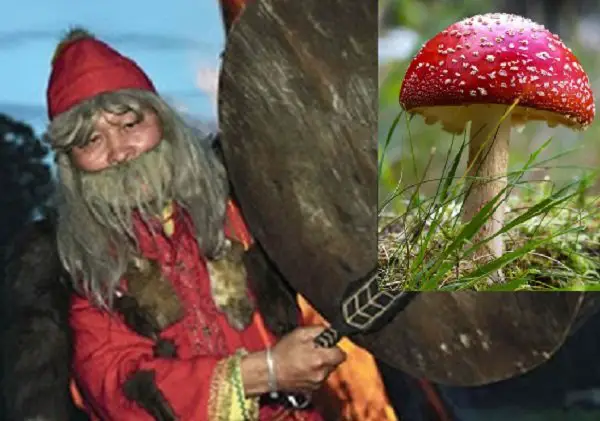The Ancient Connection Between Santa And Psychedelic Mushrooms
Tags: opinion

By Luke Miller
Warning: This article could completely change the way you see Santa for the rest of your days. If the kids ask you about him, not only will you be able to honestly tell them he is real, but you will also be armed with a mystical story that is far more surreal than any fairytale you have ever heard.
The commonly believed Christmas story goes as follows: A slightly overweight man single-handedly travels the globe in one night. He flies through the sky in a sleigh, while 8 reindeer (led by the infamous Rudolf) help him along his way. This is accomplished after billions of presents have been built by elves in a workshop in Lapland. Seems like a pretty tough ask for Mr. Claus without the help of any mind-altering substances!
The Psychedelic Connection
Post-psychedelic era, you could say this is just a story from someone with a good imagination, however, the now well documented psychedelic experiences make this sound like someone who just had a mushroom trip.
Amanita Muscaria, also known as Fly Agaric is the most familiar of the mushroom family. It has made appearances in the cult Nintendo game Mario, as the superpower which makes you grow. It has also featured in a similar context in Alice In Wonderland, Star Trek and other popular books and entertainment. What makes this significant is that Amanita Muscaria is a well-known psychedelic and its link to growth in popular culture is an interesting one.
Taken from Trees For Life: The fly agaric may have been the earliest source of entheogens, that is hallucinogenic substances used for religious or shamanic purposes, the use of which date back possibly over 10,000 years. Fly agaric has been put forward as the most likely candidate for the mysterious Soma, mentioned in around 150 hymns of the Hindu Rig-Veda, which was written between 1500 – 500 BC by Aryans in the Indus valley. Soma was a moon god, as well as a related plant and a holy brew which were also worshipped. Though there have been many suggestions as to the identity of the plant, fly agaric fits many of the Vedic references as a substance with which to contact the gods.
The reason for adding this context is because many relate the colors of Santa with Coca-Cola, but given the long historical use of Amanita Muscaria, it is far more likely that Coke actually took its colors from Amanita Muscaria or it is mere coincidence.
How This Connects To Santa
The obvious connection with Amanita Muscaria and Santa is, of course, its distinct white and red color. However, this connection does go a lot further. The Amanita Muscaria mushroom is found under pine trees, which symbolically represents the present under the tree. In its raw form, this mushroom is highly is toxic, but one to reduce toxicity is to dry them. The way the Shaman who collected them would dry them out would be to hang them in a sock in front of the fireplace like the Christmas stocking. Reindeer also love to forage for these mushrooms, but unlike humans, the reindeer have the ability to digest them. The reindeer have been seen urinating after the consumption of the mushroom and drinking it. This is a tradition that shaman have undertaken, with the shaman eating the toxic mushroom and serving his pee to his disciples. A commonly reported effect of Amanita Muscaria is the feeling of flying, so again this ties into the story of flying reindeer perfectly. The ceremony also commonly took place on the winter solstice (21st of December). After which the shaman would then walk around handing out mushrooms, while dressed up like the Amanita Muscaria

There is an almost endless list of anecdotal evidence pointing the myth to these origins. But the traditional story of St. Nicholas may also have hidden roots to this story Live Science reports: Many of the modern details of the modern-day American Santa Claus come from the 1823 poem “A Visit from St. Nicholas” (which later became famous as “‘Twas the Night Before Christmas”). The poem is credited to Clement Clarke Moore, an aristocratic academic who lived in New York City.
The origins of Moore’s vision are unclear, although James Arthur, John Rush and Carl Ruck all think the poet probably drew from northern European motifs that derive from Siberian or Arctic shamanic traditions. At the very least, Arthur wrote, Santa’s sleigh and reindeer are probably references to various related northern European mythology. For example, the Norse god Thor (known in German as Donner) flew in a chariot drawn by two goats, which have been replaced in the modern retelling by Santa’s reindeer, Arthur wrote.
Santa Is a Psychedelic Mushroom from The New York Times on Vimeo.

Leave Comment: